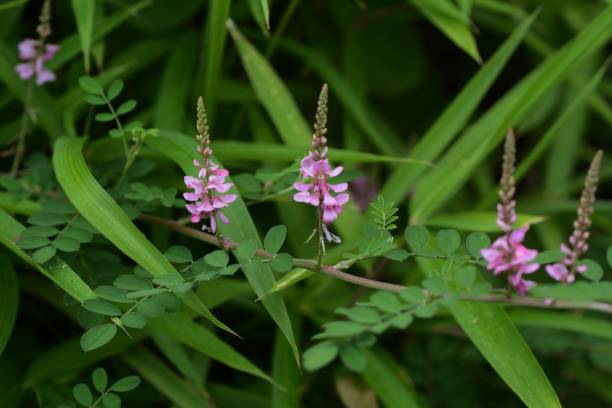அவுரி பயன்கள், சுவாரஸ்யமான தகவல்கள் | Avuri benefits, fascinating facts
by: Harshini, April 4, 2025

அவுரியைப் பற்றிய சுவாரஸ்யமான தகவல்கள்
சாய வரலாறு:
அவுரி உலகளாவிய இண்டிகோ வர்த்தகத்தில் முக்கிய பங்கு வகித்தது, 19ஆம் நூற்றாண்டில் செயற்கை சாயங்கள் வரும் வரை இந்தியா முக்கிய சப்ளையராக இருந்தது.
வரலாற்று கிளர்ச்சி:
1859-60ல் பெங்காலில் நடந்த இண்டிகோ கிளர்ச்சி, அவுரி விவசாயிகளை பிரிட்டிஷார் சுரண்டியதால் தூண்டப்பட்டது, இதன் பொருளாதார முக்கியத்துவத்தை காட்டுகிறது.
நிற வேதியியல்:
இலைகளில் உள்ள இண்டிகன் என்ற பொருள் புளிக்கவைப்பு மற்றும் ஆக்சிஜனேற்றத்தால் இண்டிகோவாக மாறுகிறது—பண்டைய சாயமிடுபவர்கள் இதை திறமையாக செய்தனர்.
தாவர உறுதி:
இது மோசமான மண்ணிலும் வறட்சி நிலைகளிலும் செழித்து வளர்கிறது, இது வெப்பமண்டல பகுதிகளுக்கு ஏற்ற பயிராக அமைகிறது.
பண்பாட்டு சின்னம்:
இந்தியாவில், அவுரி சாயம் பூசப்பட்ட துணிகள் அரச குடும்பத்தினரும் சாமானியரும் அணிந்தன, இது ஆடம்பரத்தையும் நடைமுறையையும் குறிக்கிறது.
மருத்துவ வேர்கள்:
சாயமிடுதலை தாண்டி, இதன் வேர்கள் மற்றும் இலைகள் சித்த மற்றும் ஆயுர்வேத மருத்துவத்தில் பல நூற்றாண்டுகளாக பயன்படுத்தப்படுகின்றன.
சுற்றுச்சூழல் நட்பு சாயம்:
செயற்கை சாயங்களைப் போலல்லாமல், அவுரி அடிப்படையிலான இண்டிகோ சிதைவடையக்கூடியது மற்றும் நச்சுத்தன்மையற்றது, நிலையான நடைமுறைகளுடன் ஒத்துப்போகிறது.
அவுரியின் நன்மைகள்
முடி ஆரோக்கியம்:
முடியை வலுப்படுத்தி, முடி உதிர்வை குறைத்து, பேஸ்டாக அல்லது மருதாணியுடன் பயன்படுத்தும்போது வளர்ச்சியை ஊக்குவிக்கிறது.
இயற்கையான சாயம்:
மருதாணியுடன் சேர்க்கும்போது செம்மையான கருப்பு அல்லது நீல-கருப்பு முடி நிறத்தை அளிக்கிறது, ரசாயன பக்க விளைவுகள் இல்லாமல்.
தலைப்பகுதி பராமரிப்பு:
இதன் குளிர்ச்சி பண்புகள் தலையில் எரிச்சலை ஆற்றி, பொடுகை குறைக்கிறது.
சரும நச்சு நீக்கம்:
முகமூடியாக பயன்படுத்தும்போது, சருமத்தை சுத்தப்படுத்தி, முகப்பருவை குறைத்து, நச்சுகளை நீக்குகிறது.
அழற்சி எதிர்ப்பு:
எக்ஸிமா அல்லது சிறிய காயங்கள் போன்ற சரும நிலைகளில் அழற்சியை தணிக்க உதவுகிறது.
கல்லீரல் ஆதரவு:
சித்த மருத்துவத்தில், கல்லீரலை நச்சு நீக்கி செரிமாத்b nmnhwதை மேம்படுத்த பயன்படுகிறது.
ஆன்டிஆக்ஸிடன்ட் அதிகரிப்பு:
ஃப்ரீ ரேடிக்கல்களை எதிர்க்கும் சேர்மங்களை கொண்டு, ஒட்டுமொத்த ஆரோக்கியத்தை ஆதரிக்கிறது.
அவுரியை மருதாணியுடன் இயற்கையான முடி சாயமாக பயன்படுத்துவது எப்படி:
தலைமுடிக்கு ஏன் அவுரி மட்டுமே போடக்கூடாது.. Natural Hair dye at home | Henna, Avuri |மருதாணி, அவுரி
எங்கள் நீலி அவுரி இலை பொடி வாங்க - நீலி அவுரி பொடி - Neeli Avuri Powder | பயன்கள், பயன்படுத்தும் முறை - Benefits and Usage
Below are the interesting facts and benefits of Avuri (Indigofera tinctoria)
Interesting Facts about Avuri
Dye Legacy:
Avuri was a cornerstone of the global indigo trade, with India being a major supplier until synthetic dyes emerged in the 19th century.
Historical Rebellion:
The Indigo Revolt of 1859-60 in Bengal was sparked by British exploitation of farmers growing Avuri, highlighting its economic significance.
Color Chemistry:
The blue color comes from indican in the leaves, which turns into indigo through fermentation and oxidation—a process mastered by ancient dyers.
Plant Resilience:
It thrives in poor soils and drought conditions, making it a hardy crop for tropical regions.
Cultural Symbol:
In India, indigo-dyed fabrics were worn by royalty and commoners alike, symbolizing both luxury and practicality.
Medicinal Roots:
Beyond dyeing, its roots and leaves have been used in traditional medicine for centuries, especially in Siddha and Ayurveda.
Eco-Friendly Dye:
Unlike synthetic dyes, Avuri-based indigo is biodegradable and non-toxic, aligning with sustainable practices.
Benefits of Avuri
Hair Health:
Strengthens hair, reduces hair fall, and promotes growth when used as a paste or with henna.
Natural Dye:
Provides a rich black or blue-black hair color when combined with henna, free from chemical side effects.
Scalp Care:
Its cooling properties soothe scalp irritation and reduce dandruff.
Skin Detox:
Applied as a mask, it cleanses skin, reduces acne, and removes toxins.
Anti-Inflammatory:
Helps relieve inflammation in skin conditions like eczema or minor wounds.
Liver Support:
In Siddha medicine, it’s used to detoxify the liver and improve digestion.
Antioxidant Boost:
Contains compounds that fight free radicals, supporting overall health.
How Avuri is Used with Henna as a Natural Hair Dye
தலைமுடிக்கு ஏன் அவுரி மட்டுமே போடக்கூடாது.. Natural Hair dye at home | Henna, Avuri |மருதாணி, அவுரி